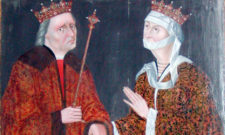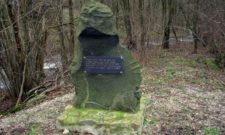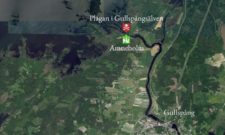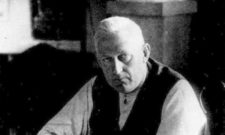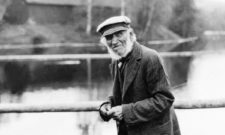Shop our historical maps
History
7 exciting burial mounds around Sweden

Sep
The burial mounds and their surrounding environments have much to tell us about their time. They were often linked to ancient centres and many contain rich burial gifts. Below is a presentation of some of Sweden's most fascinating burial mounds and their history. Several of them are first-class visitor destinations, well worth seeking out.
A burial mound is an ancient grave made of earth, stone and grass that has been laid down to form a mound in the landscape. Around Sweden there are a large number of Bronze and Iron Age burial mounds. They are often placed in burial grounds among less prominent grave types, which suggests that those buried in the mounds had a special status in society at the time. The size of the mounds is highly variable and it has been assumed that larger mounds were intended to honour great men and women. Burial mounds measuring more than 30 metres in diameter are usually referred to, somewhat inappropriately, as kings' mounds, for example the Uppsala mounds.
Uppsala piles
Sweden's most famous and notable mounds are in Gamla Uppsala, a few kilometres outside the present-day centre of Uppsala. The area is very rich in ancient monuments and was undoubtedly of great economic, religious and political importance during the Iron Age. In Heimskringla, Snorre Sturlasson describes that things used to be held at the site. Royal power also emanated from Uppsala and the site served as a religious centre for the ascetic movement. Older myths say that the god Frey settled in Gamla Uppsala, where his sons gave birth to the Ynglinga dynasty.

In Gamla Uppsala there are several mounds, but three are unusually large and dominate the landscape with their silhouette. According to Snorre Sturlasson, the kings Aun, Egil and Adils, who reigned in the 4th and 5th centuries, are each buried in a mound. In terms of time, this is quite consistent with the dating of the mounds, but the grave finds suggest that there were three royal tombs. The investigations are complicated by the fact that the tombs are cremation graves where the dead were cremated with their grave goods, but the eastern of the mounds seems to be the grave of a woman and a boy. The remains of a man have been found in the western mound, while the central mound is still unexcavated. Among the grave goods found are gold objects, playing pieces, glass beakers and a dovecote, which testifies that the buried belonged to the upper class of the time.
Hågahögen
On the other side of Uppsala is another of Sweden's more spectacular mounds, the so-called Hågahögen. Thanks to its size and its position in the landscape, it offers an outstanding view of the surrounding burial ground and the Hågadalen nature reserve. Archaeological investigations in the vicinity have yielded the discovery of several ancient settlements. It is also the site of the oldest known finds of iron production in Sweden.
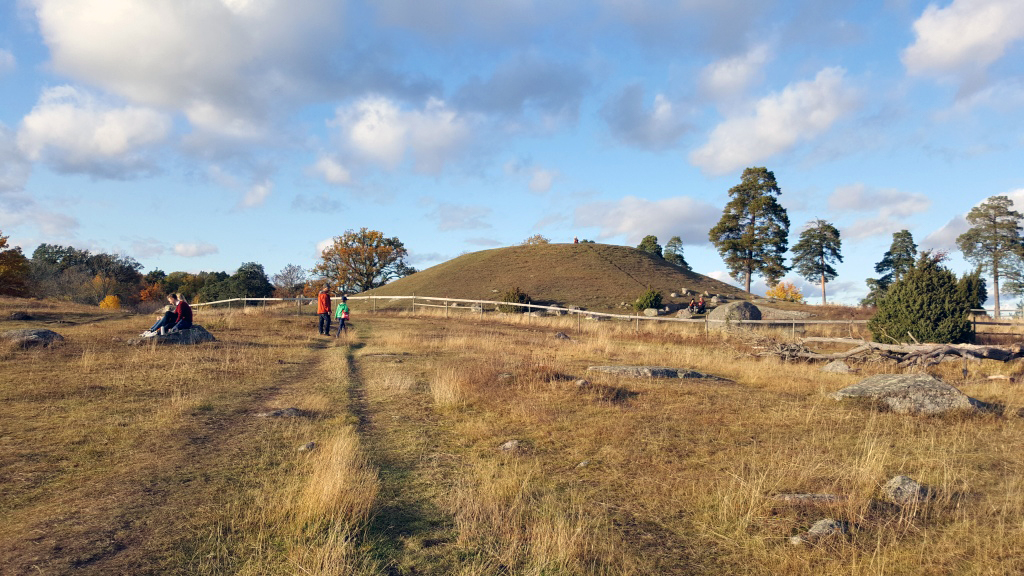
Hågahögen is sometimes called "King Björn's High" after the Viking king Björn, who is said to have lived in Uppland in the 8th century. It was the scientist Olof Rudbeck the Elder who first assumed that King Bjorn was buried in the mound. The name has survived, even though archaeological excavations have shown that the grave is much older. It was probably erected around 1000 BC.
Hågahögen is best known as Scandinavia's most gold-rich Bronze Age grave. During the excavations of 1902-1903, 52 gold objects of various kinds were found, which corresponds to one third of all gold finds from the Swedish Bronze Age. The finds included swords, tweezers, buttons and jewellery. However, it has not been possible to determine who or what was buried in the heap.
Ground investigations have shown that fires were lit on the mound, suggesting that it served as a place of worship to which people returned for repeated ceremonies. Bones of squirrels, pigs and dogs have been found in the surface layer, which may have been sacrificial offerings or part of ritual meals.
Anundshög
Another cultural-historical centre dominated by a burial mound can be found at Badelundaåsen outside Västerås. During the Iron Age, the site was a hub for Mälardalen's trade routes, and people gathered here for things right into the Middle Ages. The area contains a large number of impressive ancient monuments, of which the huge ship mounts are a special feature. Overlooking them is the enormous Anundshög burial mound, one of the largest in Sweden. According to older legends, it was the resting place of the Swedish king Bröt-Anund, although there is no historical evidence. The name Anund is mentioned on a nearby rune stone, but the connection to the burial mound is unclear. There are also several smaller mounds around the site, where archaeological investigations have shown that the burial ground has been in use for several hundred years.

In 2008, the area around Anundshög was surveyed with georadar, which led to a spectacular discovery. Scientists were able to see a 200-metre-long row of filled-in holes running towards the mound from an ancient ford. It is likely that some 30 large stones or poles stood in the holes, which means that the road to the mound was very elaborate. By all accounts, Anundshög was an important burial site, part of an ancient centre of power.
Skalunda high
Not all famous burial mounds have such remarkable finds or such a grand story to tell, but they have been talked about nonetheless. On the Kålland peninsula outside Lidköping, Skalunda mound is a memorial dating from the 6th century. And what has made this burial mound famous is the rich flora of folk myths and legends that have been linked to it.
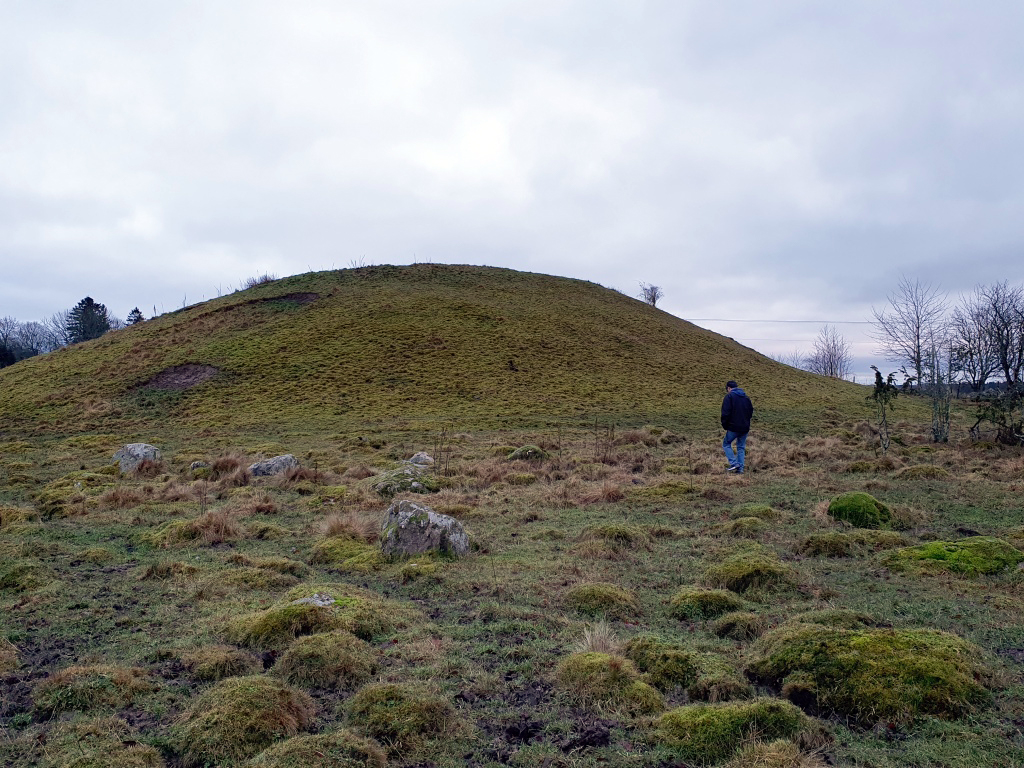
Kålland is home to a number of spectacular ancient monuments, and the locals have spared no imagination in explaining their origins and significance. Skalunda mound has become most famous for its alleged links to the activity of giants in the area. According to a widespread legend, the giants tried to build a crossing over Lake Vänern and the mound was created when a giantess dropped a clod of earth she was carrying in her apron. Also famous is the giant who once had his home at the foot of the mound. He was unusually sensitive to the sound of church bells and gave rise to several boulders when he tried to smash churches by throwing stones. When he never managed to hit the mark, he eventually chose to move to a remote island in the sea to avoid the noise. He never got over his longing to return to Skalunda, however, and when a couple of local sailors were forced to dock at his island during a storm, he was overcome with nostalgia. The story of the Skalunda giant became so popular that Selma Lagerlöf included it in her book Nils Holgersson's Wonderful Journey through Sweden.

Lugnaro Hill
One mound that has been widely acclaimed for its archaeological qualities is the Lugnaro mound in southern Halland. The mound, which is nearly 3000 years old, caused a minor sensation when excavations in 1926 revealed a stone structure in the shape of an eight-metre-long ship. Nothing like it had ever been found before.

The ships of the Heap of Calm were probably built so that the dead could have a comfortable journey to the realm of the dead. The tomb itself was built next to one side of the ship and contained a ceramic jar with burnt bones. The dead had brought with them some bronze utensils. In the upper layer of the mound there were the remains of two more graves which seem to have been added later.
Because of its unusual design, it was decided to make the Lugnaro Mound accessible to the public. Therefore, before the earth was put back, a roof vault was cast over the ship and a walking tunnel was built under the ground from a nearby cottage. After being closed for renovation for a long time, the mound was reopened last year and now welcomes visitors to view the interior of the unusual tomb.
Inglinge high
In the neighbouring region of Småland there is another mound, which could probably be called the most beautiful in the country. The Inglinge mound is not only unusually large (37 metres in diameter and six metres high), but it also stands out in other ways. The top is crowned by a remnant stone and at the foot of the stone is an ornate orb. Together, the orb and the standing stone appear to form a seat, and the stone arrangement has come to be popularly known as 'the throne of the Vira kings'. Smaller mounds are placed next to it, almost as if to form a staircase up to the Inglinge mound.

It is likely that many mounds in Sweden have previously been fitted with top stones similar to the one on Inglinge mound, but in most cases the stones were removed when local residents in the area needed building material. Today there are only a few mounds with untouched top stones. The patterned gravestone is even more unique. The decorations have been carved in relief and are so precisely designed that they must have been made by a master craftsman. Over time, the surface has been worn away, but below the mound today is a restored replica, showing what the sphere once looked like. From the elaborate tomb design, we can see that the pile must have been the resting place of an important person.

Mounds of snow
In another part of Småland, in Kånna outside Ljungby, there is a burial ground where the burial mound enthusiast can get his fill. The mounds here impress neither by their size nor their grave finds, but by their sheer quantity. In total there are almost 300 graves here, forming an undulating landscape. The majority of the mounds are pagan cremation tombs from the years 450-1050 AD. There are also younger tombs where the dead were buried according to Christian burial customs, unburned and with their feet facing east. The area also contains rings of judgement, cairns and standing stones. The mixture of different types of graves makes Kånna cemetery a rare ancient cemetery, which depicts how our burial customs have developed and changed over half a millennium.
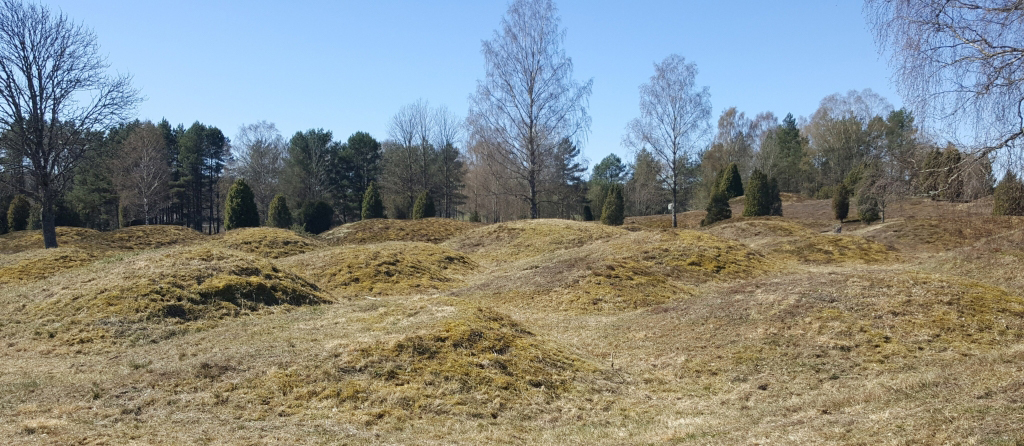
The sites presented above are only a small selection. Around Sweden there are hundreds of burial mounds with a lot of history to tell. Often they are beautifully situated and surrounded by other ancient monuments from the Bronze and Iron Ages. Many of them are great destinations for excursions and strolls, or exciting stops on a road trip. On the National Heritage Board's search service Forestry it's easy to find burial mounds, burial grounds and other ancient monuments worth visiting.
Subscribe to YouTube:
If you appreciate Allmogens independent work to portray our fine Swedish history and Nordic culture, you are welcome to buy something nice in the shop or support us with a voluntary donation. Thank you in advance!
Support Allmogens via Swish: 123 258 97 29
Support Allmogens by becoming a member
Support Allmogens in your will
